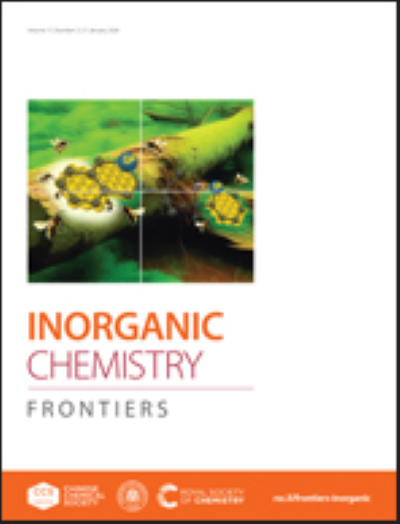The use of single metal atoms-based photocatalysts for the production of ammonia through photocatalytic nitrogen fixation
IF 6.1
1区 化学
Q1 CHEMISTRY, INORGANIC & NUCLEAR
引用次数: 0
Abstract
The conventional synthetic ammonia industry is characterized by its high energy consumption, necessitating the exploration of a new environmentally sustainable method for NH3 synthesis. A prospective alternative to the Haber-Bosch process is the photocatalytic reduction nitrogen (pNRR), allowing NH3 production under room conditions. The optimization of photocatalysts, particularly through the use of single metal atom catalysts, plays a significant role in enhancing the performance of pNRR. Single metal atom catalysts offer adjustable catalytic performance and improved selectivity, making them a viable strategy for pNRR. Research has demonstrated that carbon-based and metal-based matrices effectively disperse highly active single atoms, enhancing pNRR efficiency. This review delves into utilizing atomically dispersed single atoms in pNRR on various supporters, examining theoretical frameworks and experimental findings. The review is structured into 4 sections: elucidating the mechanism and pathway of pNRR, highlighting the use of single metal atom catalysts (SMACs) where metal atoms are dispersed on carbon substrates for pNRR, showcasing SMACs with metal atoms dispersed on non-carbon substrates for pNRR, and concluding with an overview of the existing challenges and prospects of pNRR for sustainable ammonia production.利用基于单金属原子的光催化剂通过光催化固氮生产氨气
传统合成氨工业的特点是能耗高,因此有必要探索一种新的环境可持续方法来合成 NH3。光催化还原氮 (pNRR) 是哈伯-博什工艺的一种前景看好的替代方法,可在室内条件下生产 NH3。光催化剂的优化,特别是单金属原子催化剂的使用,在提高 pNRR 性能方面发挥着重要作用。单金属原子催化剂具有可调节的催化性能和更高的选择性,使其成为 pNRR 的可行策略。研究表明,碳基和金属基基质可有效分散高活性单原子,从而提高 pNRR 的效率。本综述深入探讨了在各种支持物的 pNRR 中利用原子分散单原子的问题,研究了理论框架和实验结果。综述分为四个部分:阐明 pNRR 的机理和途径;重点介绍将金属原子分散在碳基底上的单金属原子催化剂 (SMAC) 在 pNRR 中的应用;展示将金属原子分散在非碳基底上的 SMAC 在 pNRR 中的应用;最后概述 pNRR 在可持续合成氨生产中面临的现有挑战和前景。
本文章由计算机程序翻译,如有差异,请以英文原文为准。
求助全文
约1分钟内获得全文
求助全文
来源期刊

Inorganic Chemistry Frontiers
CHEMISTRY, INORGANIC & NUCLEAR-
CiteScore
10.40
自引率
7.10%
发文量
587
审稿时长
1.2 months
期刊介绍:
The international, high quality journal for interdisciplinary research between inorganic chemistry and related subjects
 求助内容:
求助内容: 应助结果提醒方式:
应助结果提醒方式:


